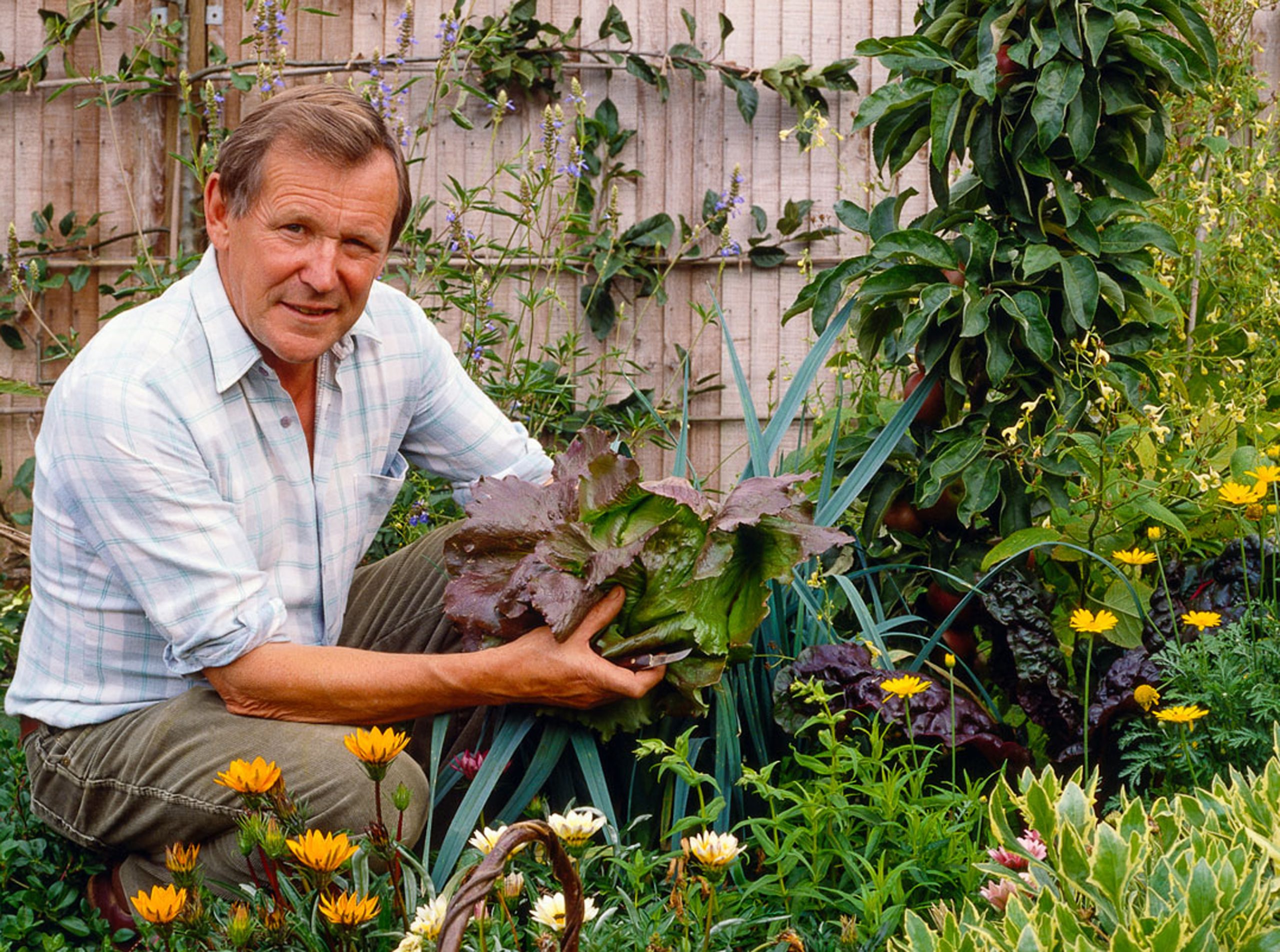Nick Hamilton: What my gardening legend dad Geoff taught me
Not following gardening rules can sometimes save plants, time and money, Nick Hamilton has learned
With the cost-of-living crisis still very much with us, horticulturist Nick Hamilton feels lucky that his late father, the legendary broadcaster and Gardeners’ World presenter Geoff Hamilton, passed on some useful tips for the practical gardener.
“The biggest tip my dad ever gave me was never to stick to the obvious and, whenever possible, to always think outside the box,” says Nick, who has run Barnsdale Gardens (barnsdalegardens.co.uk) in Rutland since his father’s death in 1996 and is author of The Right Genes, in which he charts growing up with his famous gardening dad.

Nick Hamilton, son of gardening icon Geoff Hamilton
Hamilton senior would research products at professional shows and in magazines, find something useful for amateur gardeners and make something much cheaper to do the same job, his son recalls.
“There’s a lot of joy in finding ways around things, if you make the effort,” says Nick.
Takeaway cartons
“He highlighted the reusability of these trays as a replacement for plastic seed trays, many years before using plastic was an issue. Not only were they free, but they were also smaller in size, so less waste when only wanting to sow seeds or propagate plants in smaller quantities.”
Wellie socks

Geoff Hamilton at Barnsdale
“He once had too many onions to store and so ran out of the recycled net onions bags he’d cadged from the fruit and veg market stall holder. Rather than waiting a few days and going to cadge some more, he used wellie socks instead – mine included!
“The open stitching made them perfect as a container that also allowed good airflow, and because he had filled them each to more than capacity, they didn’t fit particularly well when I eventually got them back.”
Makeshift substitutes
View this post on Instagram
“I suppose, for me, the thing he did or made, that summed him up in a nutshell, was the now iconic obelisk he designed and built for Geoff Hamilton’s Cottage Gardens series.
“The main objective was to create a beautiful, functional and, most importantly, cheap garden obelisk any of his viewers could make. He was determined to make it using the cheapest wood possible – roofing laths (battens).

The finial Geoff Hamilton used was made of a ballcock
“Once constructed, he painted it iris blue, so now the only thing the obelisk was missing was a finial as its crowning glory. I was well used to drawer knobs as inexpensive finials, but the obelisk needed something significantly larger, and he settled on a toilet ballcock. It was spray-painted the same blue colour and attached. What a magnificent structure it is too.”
Books aren’t everything
“My dad always said gardening books should be used as a guide, not a bible,” Nick recalls.
“He said that by trying different things, you gain experience, and with more experience comes that ability to use a book as a bit of a guide – but you don’t have to stick rigidly to it.
“For instance, pick up any book and it will tell you that Cercidiphyllum japonicum, the katsura tree, grows in a neutral to acid soil. Well, I planted one into limestone and 25 years on, it’s very happy.”
My 2 Katsura trees really do come with hearts on 💚🧡💚💛glimmering in this afternoon sunlight. 🌞🌞#Trees #Hearts #Leaves #Katsura pic.twitter.com/E03Evro637
— 🌱Susiekeane4 (@Susiekeane41) April 25, 2021
He continues: “We once moved a chrysanthemum in full flower, after watering it well for several days, without cutting it back at all.
“The plant needed to be moved to allow space for something he wanted to plant for a recording of Gardeners’ World, so it had to go, but he wanted to use the opportunity to see if he could move it without losing that year’s beautiful floral display. We cut as big a rootball as we could and it worked.”
Right plant, wrong place?
View this post on Instagram
When a young Nick gave his father a Magnolia grandiflora cutting he had taken from a plant growing on the wall of an old vicarage, he mentioned it would be ideal for a west wall.
“He planted it in a border in the middle of his four-acre garden. When I saw what he had done, I questioned the sense of it, stating quite clearly that it would not survive in rural Rutland without the protection of a wall.
View this post on Instagram
“Thirty-six years on and it is a superb, bushy specimen that flowers prolifically every year. The outcome is that I now often try plants where I need them, as opposed to where the books tell me they should be planted. More often than not, it works.”
The Press Association
Latest posts by The Press Association (see all)
- Upstairs, Downstairs actress and co-creator Jean Marsh dies aged 90 - April 13, 2025
- How to make a simnel cake for Easter - April 13, 2025
- Best places to see bluebells this spring - April 11, 2025
- Jayne Torvill says farewell tour with Christopher Dean will be ‘quite emotional’ - April 11, 2025
- 6 foods that are great for your heart health - April 8, 2025




















